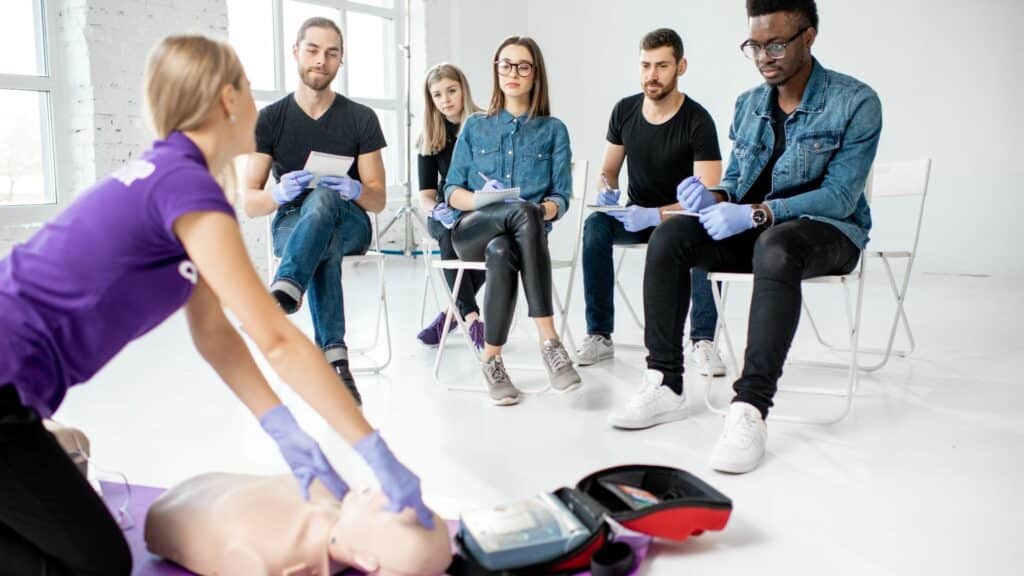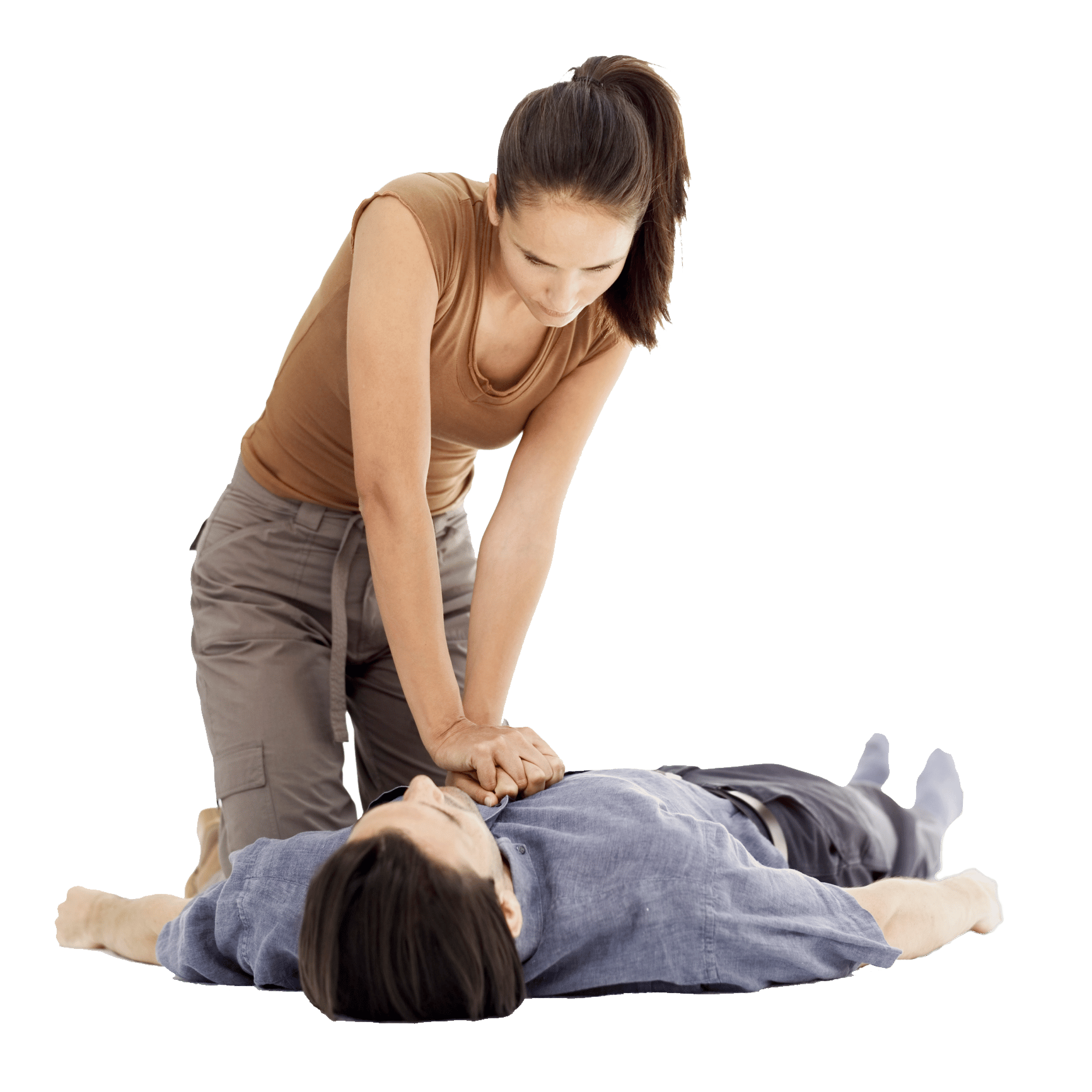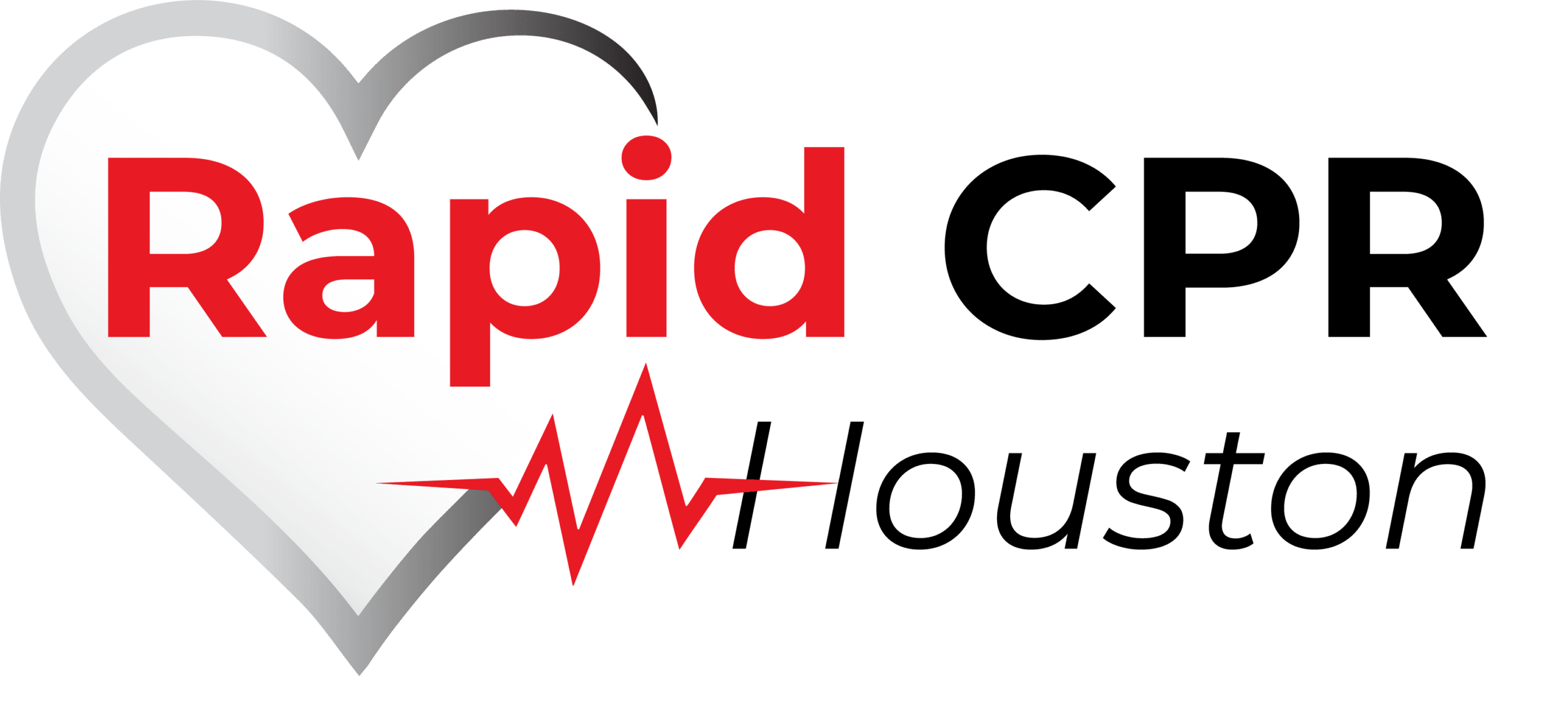- 9801 Westheimer Suite 300, Houston, TX 77042
Menu
Due to the high number of water-related injuries and fatalities and the sizable elderly population, CPR and first aid training are more important in Texas than in some other states. Although having a CPR and first aid certification is essential wherever you live, Texas’ high drowning incidence and expanding geriatric population serve as an additional incentive.
Drowning is the leading cause of unintentional injury mortality for kids aged one to four in Texas. Most of these fatalities occur between April and August when it’s hot outside.
Most drowning victims are infants and children up to the age of 12, and two out of every three drownings occur in backyard spas and pools while the adult caregiver believes the youngster to be inside.
You can boost a child’s chance of making a full recovery from a drowning incident by completing Texas CPR and first aid training.
Of course, CPR classes and first aid courses help in a wide variety of ways in the medical field, and successful completion of the right online courses or in-person AED training can add to your resume.
When someone’s breathing or heartbeat has stopped due to an emergency, such as a heart attack or a near-drowning, cardiopulmonary resuscitation (CPR) can help save their life. The American Heart Association advises beginning CPR with rapid, forceful chest compressions.
Hands-only CPR:
It involves calling for assistance and then quickly pushing on the chest. Chest compressions are the term for these motions.
Traditional CPR
It uses breath. This technique, often known as CPR with breaths, alternates mouth-to-mouth breathing with chest compressions.

Thousands of seniors migrate to Texas every winter to take advantage of the pleasant climate and abundance of natural beauty, cementing its reputation as a top “snowbird” state. According to research, by 2020, more than one-fourth of Texas’ population (26%) will be over the age of 60, up from roughly one-sixth (17%) in 2000.
The US Census Bureau reports that Texans over the age of 85 have increased at an 82 percent rate over the past ten years, outpacing all other age groups. The over-65 age group is anticipated to quadruple by 2030 as a result of this growing tendency.
Learning CPR will help save this increasing population’s lives when the need arises.
Accidents can happen anywhere, in the kitchen, on the road, and even when having a bath. The result can have mild to severe consequences for a person. The first treatment a person gets after an accident is important and can go a long way in maintaining the situation. First aid is the first treatment a person receives before a medical professional attends to them.
Undergoing first aid training gives you the basic skills you need to be a superhero in Texas. Well, saving a life is one of the qualities of a superhero. First aid training helps you know what to do when there is an accident.
In addition, you will learn basic things like
First aid training can take 1-2 days or more, depending on your schedule. Standard first aid and CPR training take between 13 and 14 hours for teaching and practical, after which an evaluation is conducted.
We are one of the best CPR and First aid training institutions in Texas. Our instructors are highly trained health professionals with years of experience. They are good communicators and great teachers who will pass on their knowledge of first aid and CPR to people living in Texas. We believe in making Texas a safer place for everybody.
We offer you top-notch services and provide you with a certificate upon completing our CPR class and first aid training class.
If you are looking to serve as healthcare providers or healthcare professionals in the present era, then BLS classes, AED courses, and general safety training can certainly be beneficial. Those who know about pediatric advanced life support, automated external defibrillator equipment, and basic life support can be helpful in emergency situations as well.
Find out how our CPR classes and CPR certifications can be valuable to you.
Reach out to us today!


We’ll be happy to answer any questions that you have about our CPR certification and training services.


We are on a mission to make CPR training more accessible for all. Over 350,000 persons die each year resulting from cardiac arrest. We know the importance of CPR training and believe that everyone should have access to training with ease.